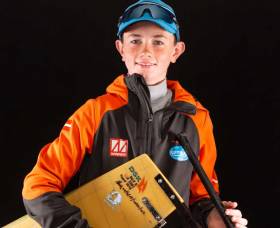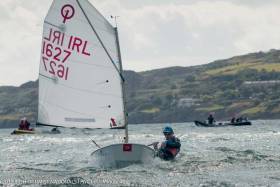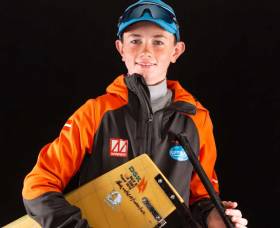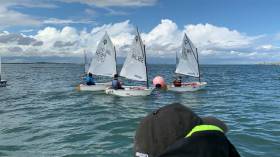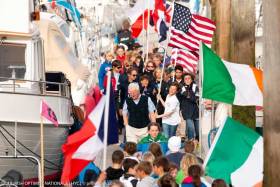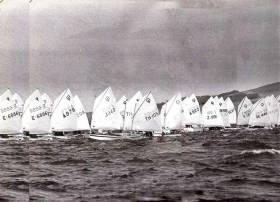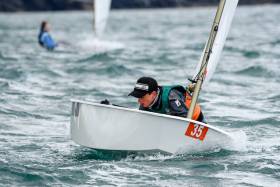Displaying items by tag: Optimist
JP Curtin Leads Optimist Cobbler League
JP Curtin leads the Optimist dinghy Cobbler League Main Fleet after nine races sailed at Royal Cork Yacht Club writes Bob Bateman.
Second is Crosshaven sailor Harry Moynan with Tralee Bay Sailing Club's Riona McMorrow Moriarty in third place in the 20-boat main fleet.
Full results are here. Photo gallery below.

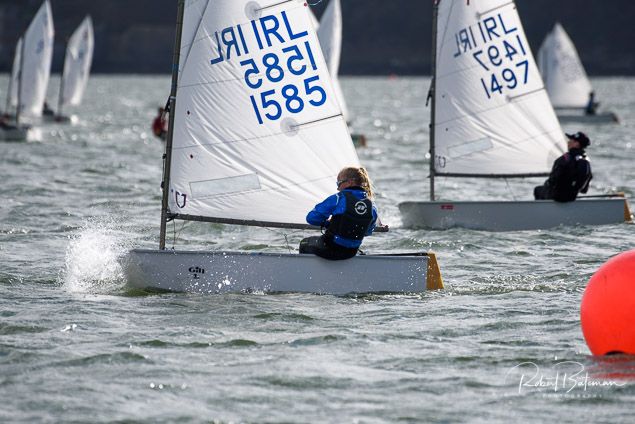

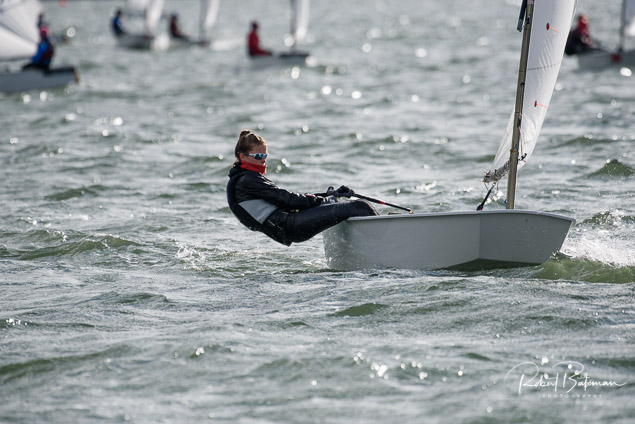
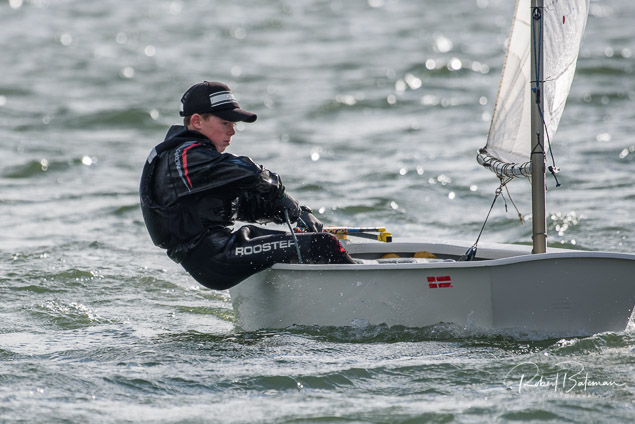
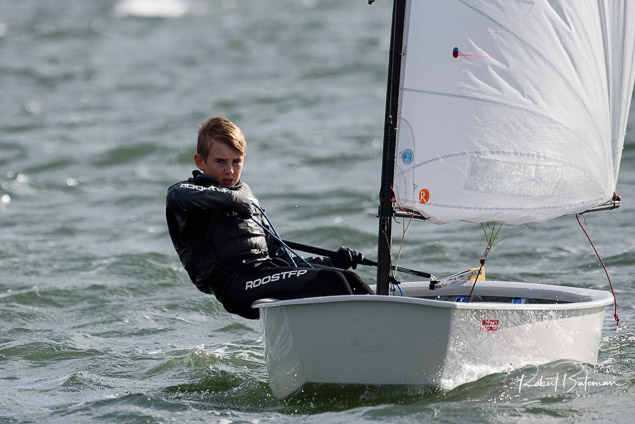
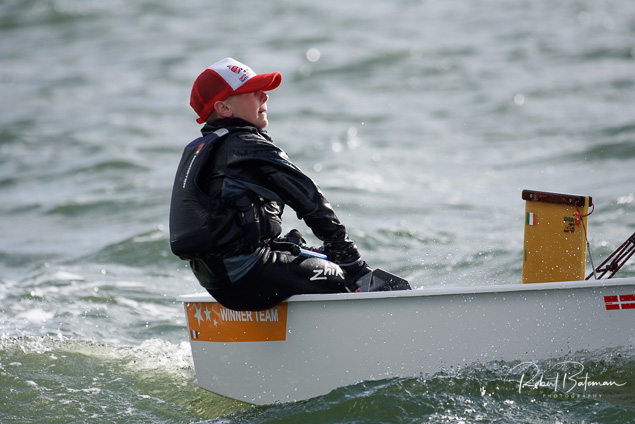
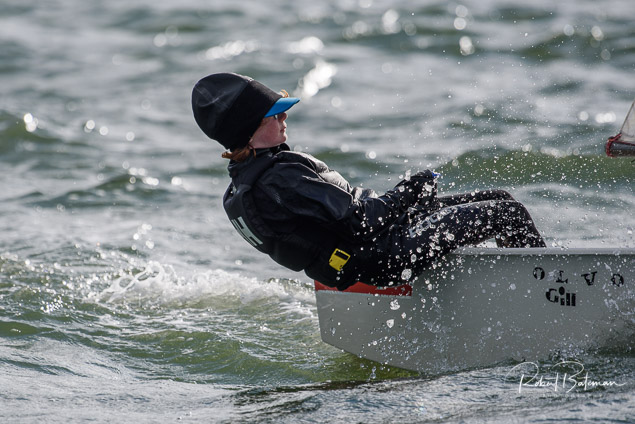

James Dwyer Matthews is 'Sailor of the Month (Junior)' for August
When young James Dwyer Matthews of Royal Cork and Kinsale returned in early August from England with the 2019 British Optimist title added to his already impressive trophy list, it was in the knowledge that the up-coming Irish Nationals at Howth had attracted a fleet of 185 boats from 11 nations, with a notably strong American squad in the midst of it. Thus an almost unfair amount of expectation was resting on his 15-year-old shoulders in his final season as an Optimist sailor, and for much of the series, it was the extremely competent American helm Freddie Parkin who remained persistently if narrowly in the lead. But when the last day proved to be El Bruto with some very grown-up weather, Matthews was the man for it. Having taken a useful third in the penultimate race while Parkin was fourth, the chance was there, and Matthews took it, returning a convincing win while Parkin had to make it a discard with a tenth, leaving Matthews a clear winner with 15 points to Parkin’s 21, while 14-year-old Luke Turvey of the host club was third with 28, having taken second in that final bloodbath.
The weather gods conspired against sailors on the final day of the 2019 Optimist Nationals At Howth YC.
The senior fleet were sent out first this morning on their own in a strong breeze, to race and to test the conditions for the younger fleets. This turned out be an inspired call by the race committee as the wind immediately started to build. The seniors then enjoyed a race in exhilarating conditions with capsizes and nosedives aplenty. The cream always rises to the top, and James Dwyer Matthews of RCYC / KYC finished the event in fine style with another bullet. However conditions were deteriorating with gusts in excess of 30 knots, and the decision was rightly taken to bring sailors ashore.
With the help of this final race win, James Dwyer Matthews emerged as the winner of both the Irish Nationals and Open titles, with Freddie Parkin of USA in second overall. They were followed by Luke Turvey, Rocco Wright and Johnny Flynn - all of HYC.
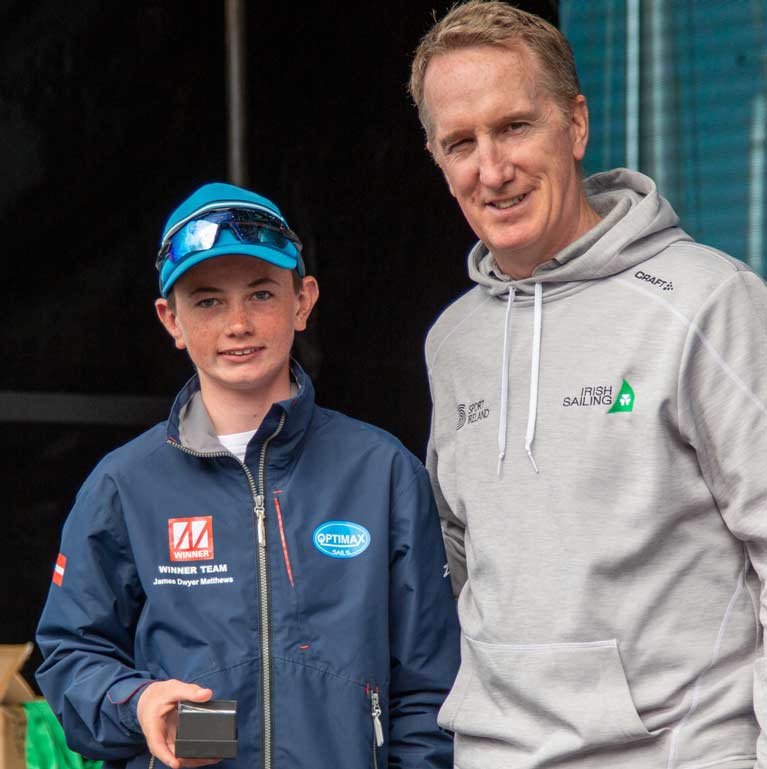 James Dwyer Matthews of RCYC / KYC receives his ISA Gold Medal from Colin Kavanagh of the ISA. James also won the UK Nationals overall in Weymouth last month
James Dwyer Matthews of RCYC / KYC receives his ISA Gold Medal from Colin Kavanagh of the ISA. James also won the UK Nationals overall in Weymouth last month
With no change in the Juniors, the event was won by Nathan Pine of Team USA. William Walsh of HYC / TBSC / MYC was the deserving winner of the Junior Irish Nationals crown from Des Turvey and Cillian Twomey, both from the host club.
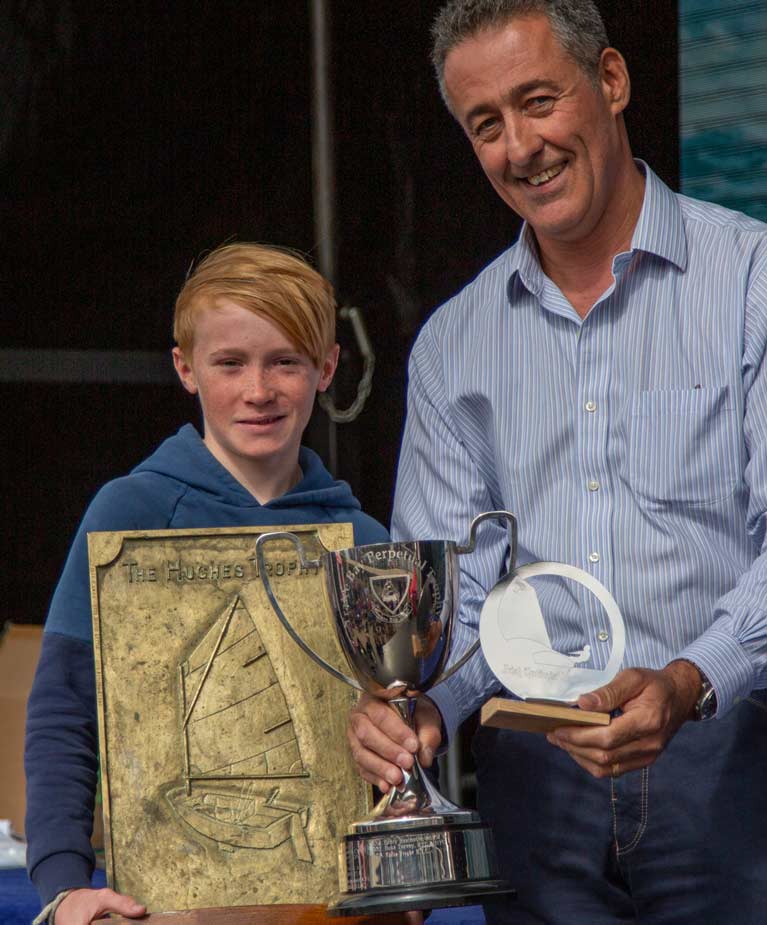 William Walsh of HYC / TBSC / MYC receives his Junior Nationals Trophy from Tim Lucas, President of IODAI
William Walsh of HYC / TBSC / MYC receives his Junior Nationals Trophy from Tim Lucas, President of IODAI
The coached Regatta Fleet was won by Conor Cronin from Malahide.
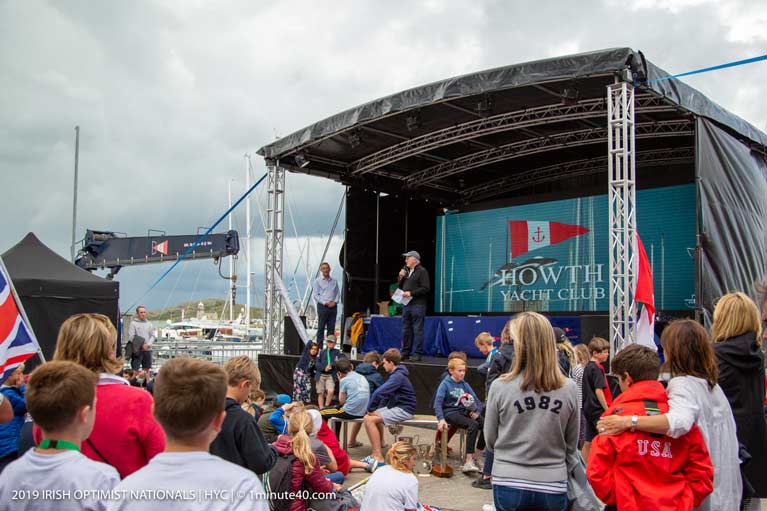 Closing ceremony of the Irish Optimist Nationals
Closing ceremony of the Irish Optimist Nationals
A very well attended closing ceremony and prize-giving followed that was enjoyed by all. The host club Howth YC under the leadership of the main event organiser Darren Wright, and aided by a 70+ strong team of volunteers ran a superb event, with the bar raised significantly for RCYC who will host the event as part of their 300 years anniversary celebrations next year.
Full results here
Saturday brought a change of fortune for sailors at the Optimist National Championships at Howth Yacht Club with champagne sailing conditions that overflowed a little for some.
The seniors were the main action of the day. They got four races in to make up for the challenges of the previous day. Freddie Parkin from Team USA is leading the field after eight races into the last day, with James Dwyer Matthews from RCYC hot on his heels and leading the Irish Nationals. The locals though have not given up the fight with Luke Turvey, Rocco Wright and Johnny Flynn - all of HYC still in contention. Sam Ledoux from Dun Laoghaire who was well in contention, suffered a broken rudder which hurt his chances - however, a 2nd discard which will happen after the next race could bring him back into the mix.
The Juniors only got two races in, as the building wind that gusted in excess of 25/26 knots was too much for some of these younger and lighter sailors. The decision was taken to send them home after two exhilarating races, but at that stage, there were probably too many boats ending up upside down. Nathan Pine from the USA is leading out the Juniors with USA & GBR sailors filling the first 4 places. William Walsh from the host club (and TBSC / MYC) is leading the Irish challenge and the Junior Nationals with a highly credible 5th position in a strong international field. He is followed in the Irish Nationals by Des Turvey and Cillian Twomey, both also of HYC and with a lot to do if they are to take the national title.
In the Regatta Fleet, Conor Cronin from Malahide leads going into the finals day, followed by Benjamin Barry of RCYC. However again the locals have not given up the chase again here, with Keelan Darby from Howth YC pushing them all the way.
Racing concludes on Sunday. Results are here
Day 2 was a difficult day at the Optimist National Championships at Howth Yacht Club for all concerned with the vagaries of the Irish sailing conditions making it very challenging for both sailors and organisers alike.
Sailors were held ashore as an early gale warning had been issued, but was due to blow through. The fleets launched 2 hours later in a dropping breeze, which was shifting significantly across the race course. The junior fleet got away after a general recall, only for the race to be abandoned because of a massive shift before the leaders reached the first mark. This was followed by numerous failed attempts to start the junior fleet under U Flag, a few Black Flag starts and the jury boats encouraging sailors to remain behind the line. With no other options available to the race committee under the Sailing Instructions to get the fleets away, the difficult decision was taken to send the Junior Fleet ashore without a race.
Then it was the turn of the Senior Fleet.... At the second attempt the fleet got away cleanly. A quite significant shift on the first beat penalised a number of the boats, while other took advantage. George Pritchard from MBSC / RCYC sailed a flawless race to take the race from Stephen Momeier and Pearse Dowd from Team USA.
The fifth race in the senior race started then in a medium breeze. However as the fleet rounded the first mark, a torrential rain shower began which also brought extremely poor and disorienting visibility. The race committee took the only decision possible in the interests of safety to abandon the race and for safety boats to corral the fleet. The fleet was then sent home after a long day on the water, of course as the sun came out! A number of the higher-ranked Irish sailors will anxiously be hoping for at least nine races to be sailed in the event due to finish on Sunday, in order to access a second discard.
Meanwhile, the Regatta Fleet (coached racing) which was positioned off Claremont Beach sailed serenely on! This fleet has now completed 7 races, with results to be uploaded later.
The forecast for Saturday is promising steadier winds, which will hopefully facilitate some catching up of races not sailed today.
All results are available here
Team USA Take the Lead at Irish Optimists Nationals at Howth, James Dwyer Matthews of RCYC is Second
Day one completed at the 2019 Optimist Nationals in Howth Yacht Club, with three good races in a real mix of conditions for the main fleets - senior and junior.
The day started with 16-20 knots of breeze but this reduced over the day, offering something for everyone. A fairly significant shift on the first beat of the last race caught out quite a few boats, and asked questions of some of the leading contenders.
The Regatta Fleet (coached racing) were held ashore for a while until the wind reduced, but they then got 3 races in, with Benjamin Barry from RCYC taking the lead after day 1 from Conor Cronin of Malahide YC and Keelan Darby of the host club.
In the Senior Fleet, Freddie Parkin of Team USA has opened up a commanding lead with three excellent races behind him already. He is followed by a number of the leading lights of the Irish Optimist scene with James Dwyer Matthews of RCYC / KYC in second and Johnny Flynn of HYC / RStGYC in third. One of the pre-event favourites Rocco Wright is hot on their heels.
In the junior section, the international competitors are showing their strength, with USA and GBR sailors filling the first 8 places, led by Nathan Pine of USA. William Walsh of TBSC / HYC / MYC is leading the Irish charge, followed by Cillian Twomey and Des Turvey from Howth.
The Principal Race Officer David Lovegrove patiently waited for the sailors to find their starting manners, with a few recalls in each fleet in the first race. However, the U Flag and Black Flag then appeared, with first time starts then being the order of the day.
A bit more wind is forecast for Friday which promises an exciting day for all.
Results are here.
Optimist Class Gets Record Fleet for Nationals at Howth
When Howth Yacht Club hosted the 1981 Optimist Worlds, it was while the harbour was in the midst of a major redevelopment project writes W M Nixon. Yet young sailors from 26 nations provided a fleet of 130 boats, and getting them afloat each morning from a special slipway at what was then the Claremont Hotel on the beach to the west of the harbour was a major logistics challenge writes W M Nixon.
Tomorrow, the Irish Optimist Nationals get under way at Howth, and there’s a fleet of 185 boats – seven more than at Kinsale last year – and their young and sometimes very young helms come from eleven nations. Clearly, our Optimist Class is in great good health.
In 1981, some of the competitors from warmer climes complained about the rugged weather, but being the Worlds they knew they’d to take what was on offer. However, the fact of eleven nations – including a strong squad from the US - taking part in the competition over the next four days tells us much about the current strength of the Irish class, which is on something of a roll these days.
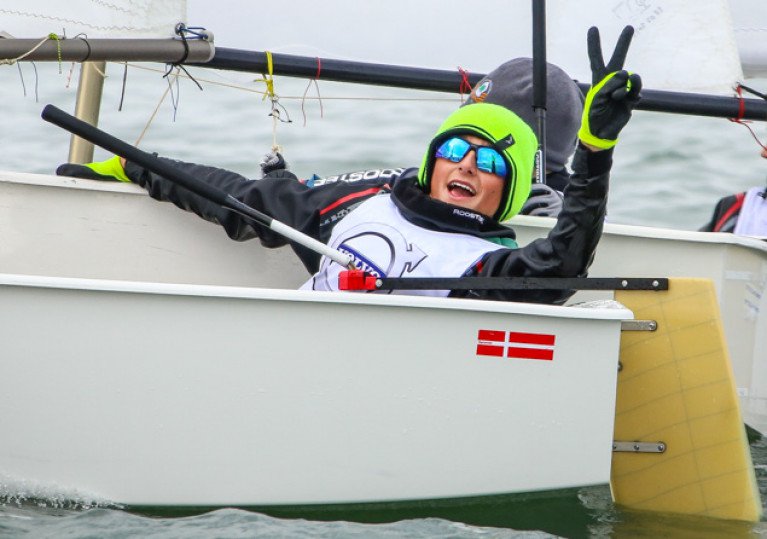 Defending champion Justin Lucas (Royal Cork YC). Photo Afloat.ie/David O’Brien
Defending champion Justin Lucas (Royal Cork YC). Photo Afloat.ie/David O’Brien
Back in the 1981 Worlds, the overall winner was Guido Tavelli of Argentina, while the top girl was Ireland’s Denise Lyttle of the Natinal YC, who was 17th in the open division. The Argentines were on top form in 1981, the last year before the Falklands War, and they also won the Team Prize, while the folk in Howth were drily informed by one of the sophisticated people accompanying the squad that your classic Argentine is an Italian who speaks Spanish and thinks he is English. This would seem to be at odds with the efforts of a certain Government minister, who spoke Italian to the Argentina-born Pope on his visit to Ireland last year, under the impression that this was his native language.
With Oppie sailors being exiled into the big bad world when they become 15, the turnover of talent is inevitably very rapid, and it’s more than difficult to keep tabs on the fact-moving production line of winners.
Defending champion is Justin Lucas who currently lists Royal Cork as his home club, and also well in the frame of serious contenders is James Dwyer Hickey of Crosshaven and Kinsale, while the host club’s Rocco Wright is progressing so rapidly in major events at home and abroad that any overall contemplation of the front runners in the Senior Fleet is akin to ranking a gladiatorial contest, and it’s a gladiatorial contest in which the obtuse August 2019 weather seems determined to make things even more difficult.
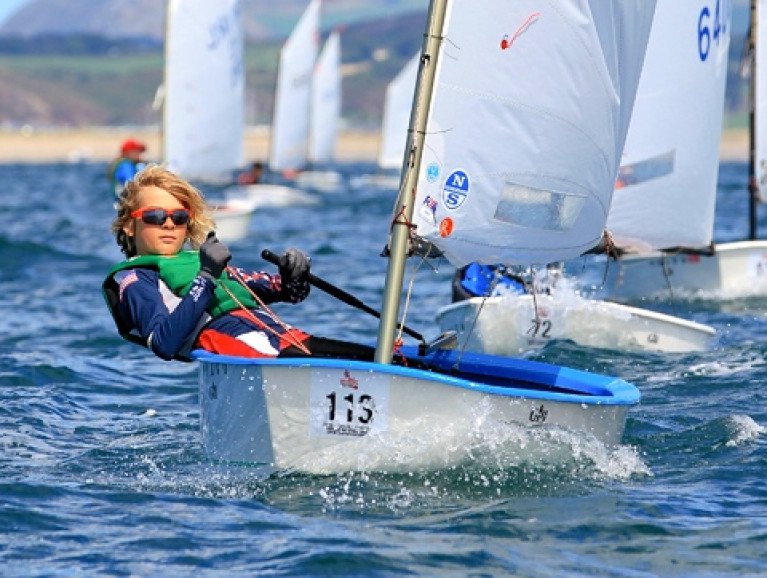 Rising star – Rocco Wright of Howth YC
Rising star – Rocco Wright of Howth YC
Meanwhile, in these times of tight budgets and shy sponsors, it’s intriguing to recall that back in 1981, after the Claremont Hotel had been returned to normal on its waterfront site and Howth Yacht Club was able to resume its battle towards having an in-harbour marina which finally opened in its first sections in July 1982, it was discovered that staging the 1981 Optimist Worlds had left HYC Events Ltd with a surplus of just over 5,000 pounds. It was used to buy a new rescue boat.
Ireland is Ninth Nation at Optimist Europeans Championships
Seven young sailors were selected at the Optimist trials last April to represent Ireland at the Optimist Europeans in Crozon, Brittany writes Coach Thomas Chaix. The 2019 regatta had about 300 entries from 50 countries making it virtually a 'B Worlds'. We were pretty happy at the Western tip of mainland Europe keeping on the edge of the worst of the heat wave and despite challenging wind conditions, team Ireland enjoyed a good event and represented the IODAI and their clubs with pride.
After a day waiting for the wind (no racing), we completed a 5 races qualifying series over two days.
The first day delivered plenty of drama with a confusing finish in very light breezes for one of the girls fleet leading to a staggering number of girls scored DNF. Jessica Riordan (RstGYC) and Alanna Twomey (RCYC) fell foul of the situation putting early pressures on their series. Teammate Clementine Van Steenberge (NYC) made the most of the light breeze to secure two top 10 finishes (9-3). The boys found the light breeze challenging. The second racing day started with a medium 10-12 kts gradually building to 16-18 kts. Clementine maintained her good form (3-14-8) and Jessica showed great character putting a second blow behind her to deliver 2 superb races (BFD-8-4). Alanna had a tough task on the final race to deliver a solid race to secure selection in the gold fleet. She managed to squeeze in thanks to a gutsy final beat gaining places one by one to the finish... All 3 girls made it into the gold fleet which I believe was a first for team Ireland. In the boys fleet, Justin Lucas (RCYC) enjoyed the breeze and showed his master class in the conditions rounding up his qualifying series with a race win (2-12-1). He secured his spot in the boys gold fleet. Fiachra McDonnel Geraghty (NYC) eventually started to show his bow to the front but fell well short of gold. Johnny Flynn (HYC) was equally disappointed with a consistent yet insufficient series to secure Gold. Archie Daly (RstGYC) rounded up his qualifying series with his best race (18th) and settled with Bronze fleet.
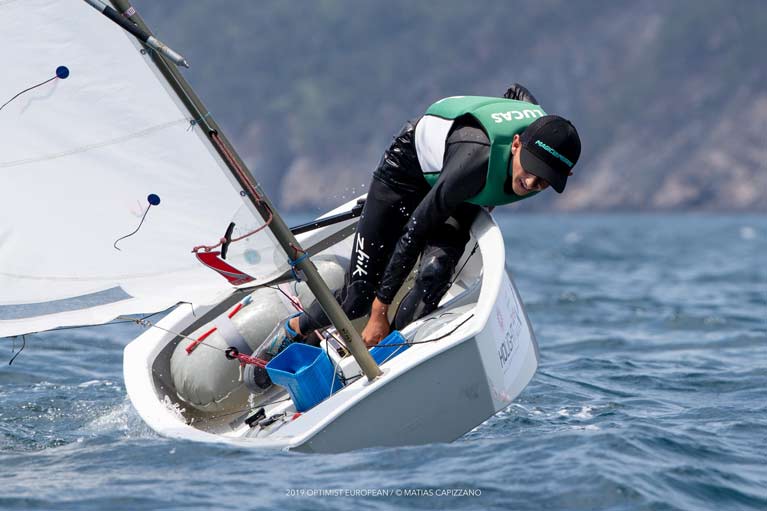 Justin Lucas (16th European) in action Photo: Mattias Capizzano
Justin Lucas (16th European) in action Photo: Mattias Capizzano
We were looking good before the finals. The 5 races however delivered a challenge we found very difficult.
Despite a good forecast, the first day gave conditions many would have deemed unsuitable for racing with 2-5 kts, insane shifts and very different conditions and wind angles from left to right of the course. Clementine eventually scored her discard (UFD) whilst Alanna new attitude “I have nothing to lose” delivered her best race (14th). Justin saved his first race well (12th) before falling foul of a 50 degrees shift in the second. In Silver, Fiachra and Johnny sailed a solid first race (both top 10) before getting caught by the now infamous left shift in the second one. Archie had just one race.
The final day of the event remained light, but the conditions were definitely fairer and 3 races were sailed in 5-10 kts from the west. 13-year-old Clementine was certainly tired and somewhat tense but determined to give it her best. The first two races were challenging for the National YC sailor and the dream just became too far to reach. But she kept her concentration and her final effort was better allowing her to secure 14th overall (11th at the Europeans) which constitute the best finish by an Irish girl since the 90s. Alanna’s final race (13th) secured her 51st overall, just 2 ahead of teammate Jessica who alternated brilliant sailing with costly errors. The lighter breeze was not to Justin’s taste and despite showing some pride securing a 4th on the second race, there was a significant loss of points dropping him to 19th overall (16th at the Europeans). The man on form was Fiachra rounding up his event with a race win (2-10-1) and securing the most significant gain climbing back to 5th overall in Silver, overtaking Johnny in the process (9th overall in Silver). Archie had two solid 10th for his final day racing concluding his event 12th in the bronze fleet.
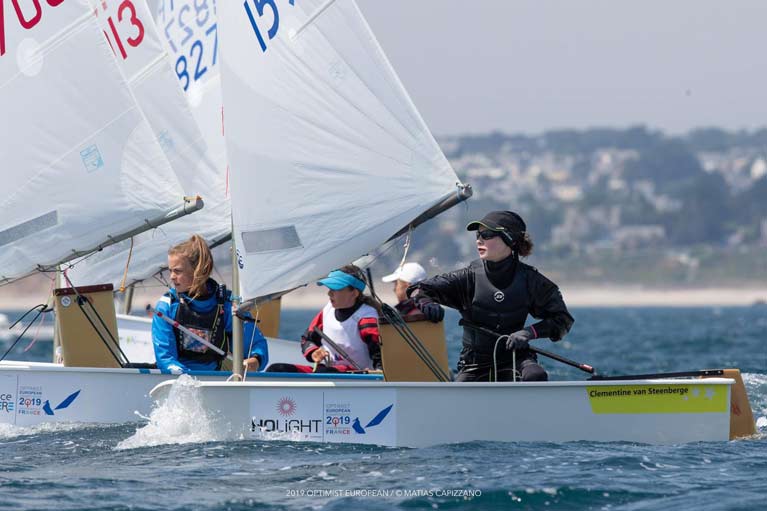 Clementine Van Steenberge (11th Europeans) Photo: Mattias Capizzano
Clementine Van Steenberge (11th Europeans) Photo: Mattias Capizzano
For the third time since the start of the Nation Cup some 15 years ago, Ireland secured top 10 nation. After last year's superb fourth, we are confirming Ireland as one of the best nations in Europe in 9th.
Bring on Estonia in 2020!
The Optimist class at the Irish Sailing Youth Championships at Royal Cork Yacht Club were the only class that got racing today thanks to the relative shelter of their race course on Cork Harbour's Curlane Bank.
In the Trials fleet, after six races sailed and one discard, James Dwyer Matthews of Kinsale leads the 60-boat fleet with Sam Ledoux of the National Yacht Club second and Rocco Wright of Howth third. Full results here
Local Optimist sailor James Dwyer Matthews extended his overall lead of the class at the end of the sixth race in the series that started on Thursday. The 15 year old is counting all top five results to date.
Kerry’s Eimer McMorrow Morriarty is best of the girls in the class in fifth overall.
Racing is currently abandoned for the day and possibly until later on Saturday subject to a decision in the morning and depending on the progress of Storm Hanna.
Scroll down for photo gallery below
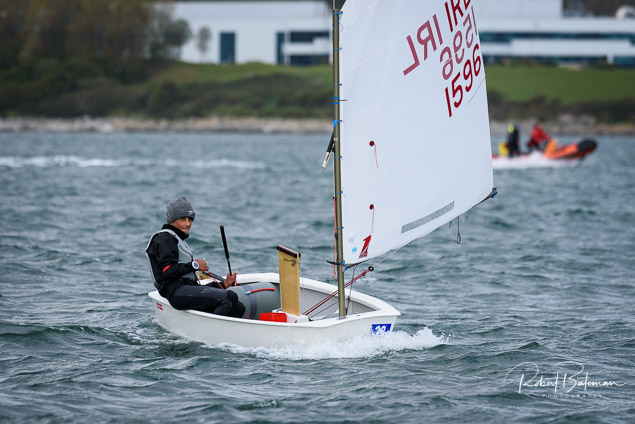
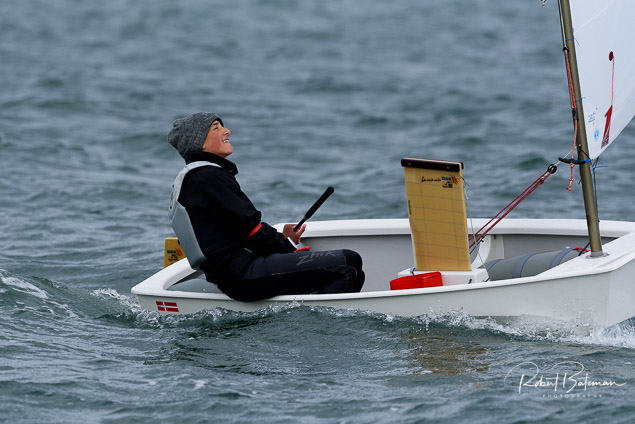
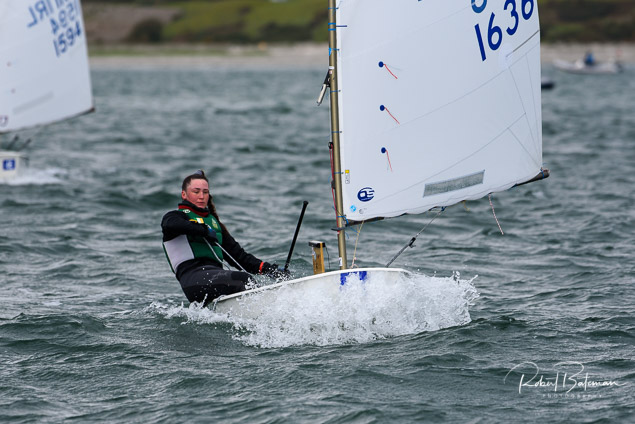
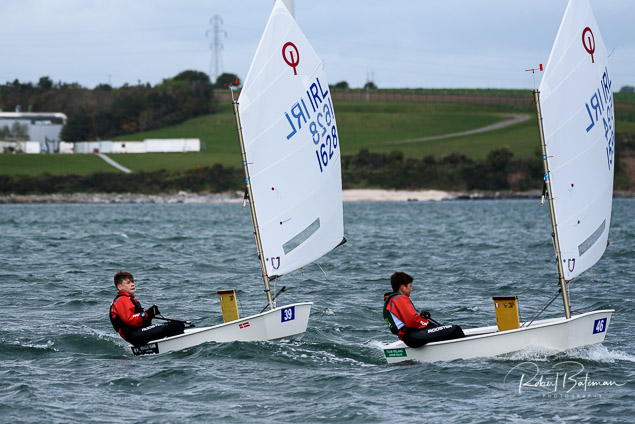
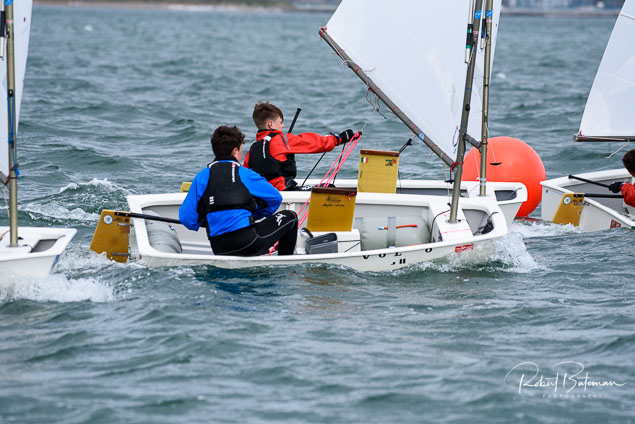
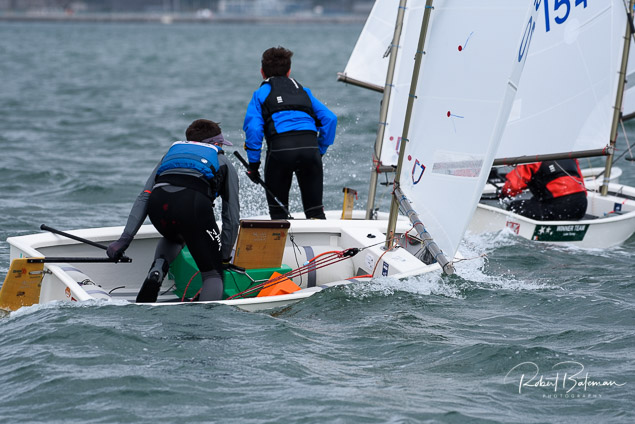
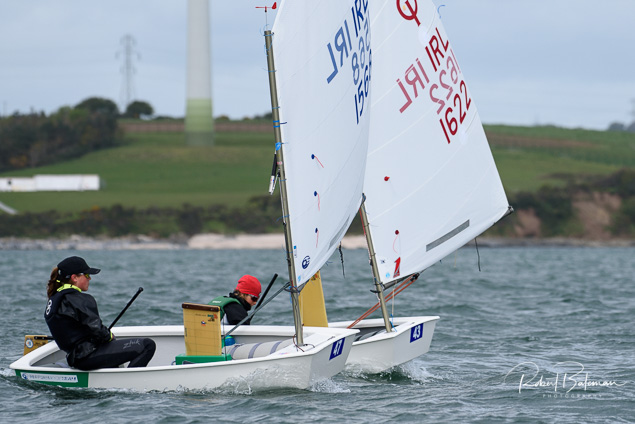
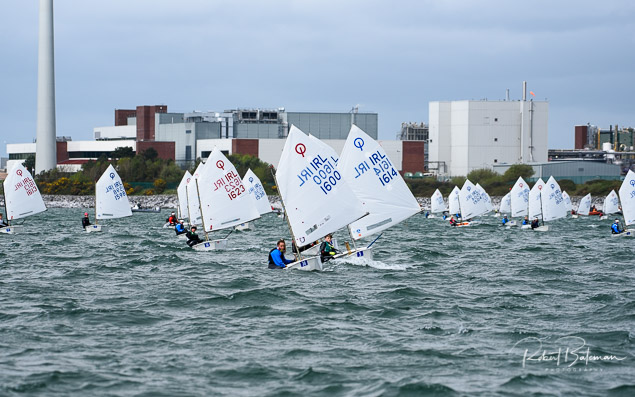
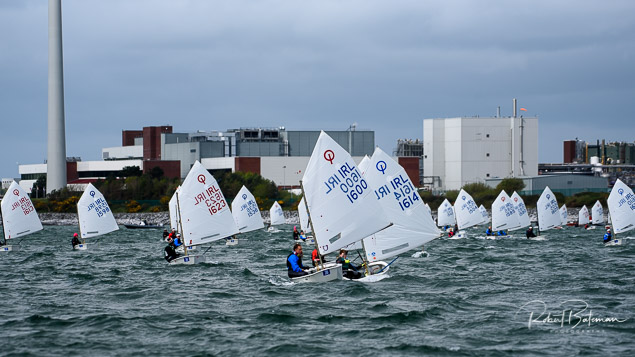
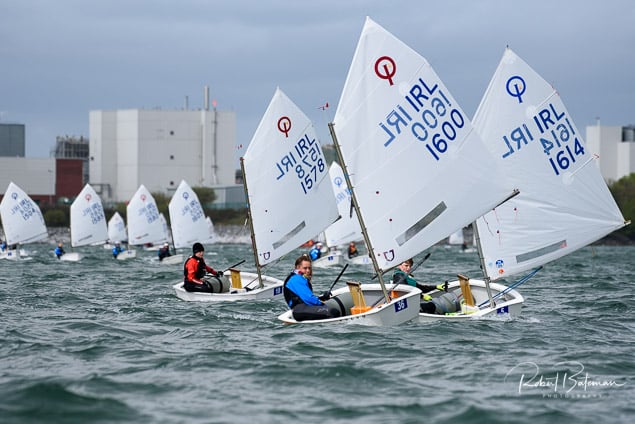
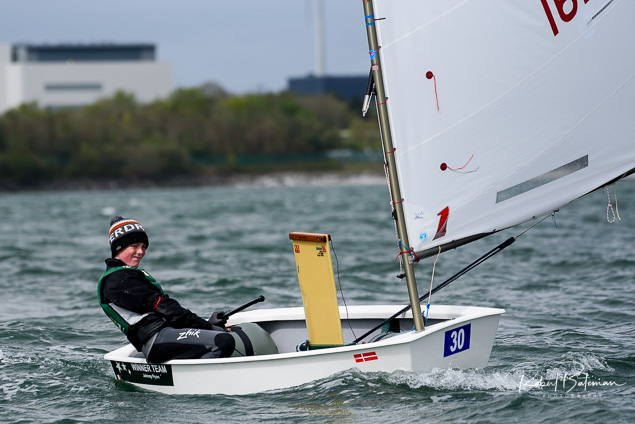

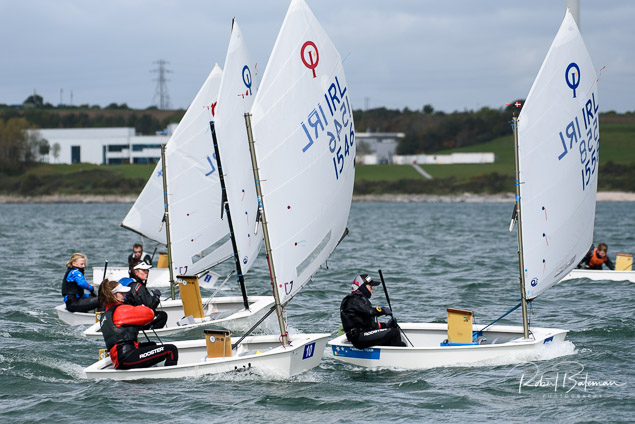

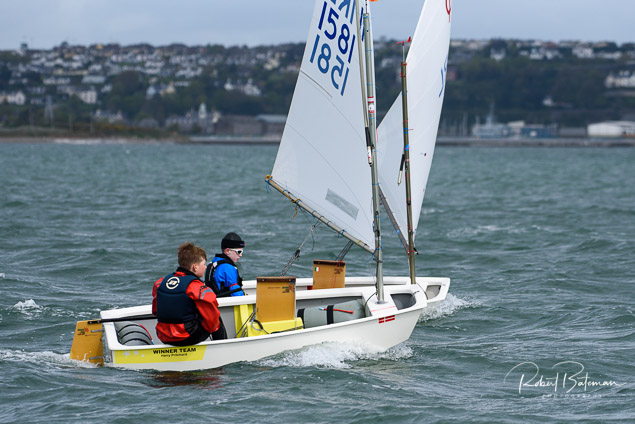
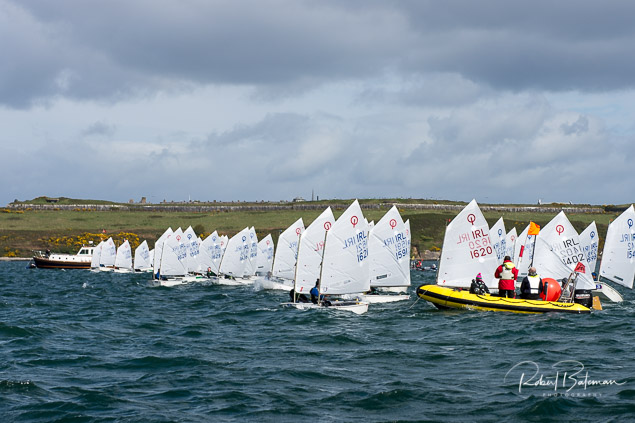
A fleet of 155 boats is a daunting prospect, even when they’re little Optimist dinghies. But in recent years young James Dwyer Matthews of Kinsale has shown increasing expertise in dealing with the special challenges such numbers entail. Now at the age of 15 he has reached a new level of performance by carrying off the overall win in the British Spring Opens in Lymington to inspire a formidable 28-strong Irish campaign, making him a clear winner of the Afloat.ie Sailor of the Month Junior Title for March.
More on this story here





























